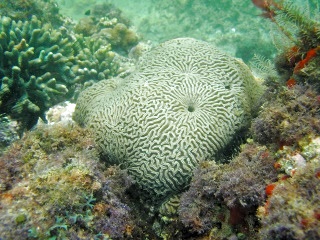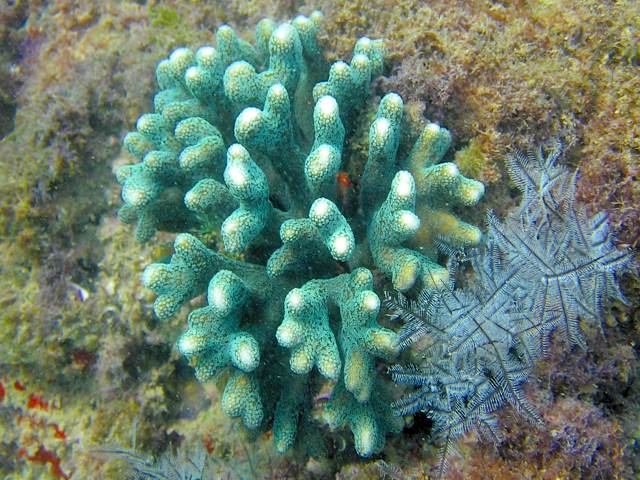zurück Übersicht
Korallen Corals Oman
zurück
vor


Corals are fascinating marine organisms that
play a vital role in ocean ecosystems, especially in the formation of
coral reefs. These ecosystems
are some of the most diverse and productive environments on Earth. Here’s an
in-depth look at corals:
1.
What Are Corals?
-
Corals are marine
invertebrates belonging to the
phylum Cnidaria. They are
made up of tiny, soft-bodied animals called
polyps that group together
to form large colonies. Each polyp has a cylindrical body and a central
mouth surrounded by tentacles, which they use to capture food.
- Corals are
sessile, meaning they are
fixed in one place and do not move. They are typically found in tropical and
subtropical oceans, although some species can live in colder waters.
2.
Types of Corals
3.
Coral Reefs
-
Coral reefs are large
underwater structures made from the calcium carbonate skeletons of corals,
built over thousands of years.
- These reefs provide important habitats
for a diverse range of marine life, including fish, mollusks, sea turtles,
and more.
-
Great Barrier Reef: The
world’s largest coral reef system, located off the coast of
Australia, is a prime
example of a coral reef and is recognized as one of the
Seven Natural Wonders of the World.
-
Reef-building process:
When coral polyps secrete their calcium carbonate skeletons, the reef
structure grows over time, eventually forming large, complex ecosystems.
4.
Symbiotic Relationship with
Zooxanthellae
- Corals have a mutualistic relationship
with tiny algae called
zooxanthellae that live within their tissues.
- These algae perform
photosynthesis, producing
energy-rich compounds that feed the coral, while the corals provide a
protected environment and access to sunlight for the algae.
- This relationship is crucial for the
survival of most corals, especially those in
shallow waters, where
sunlight is abundant.
5.
Coral Feeding
- While corals primarily rely on
zooxanthellae for food
through photosynthesis, they are also
carnivorous and capture
small plankton and microscopic organisms from the water using their
tentacles.
- Corals extend their tentacles at night
to capture food, and they can use
stinging cells called
nematocysts to immobilize prey.
6.
Reproduction
-
Sexual reproduction:
Corals can reproduce sexually by releasing eggs and sperm into the water
during a process called spawning.
This typically occurs once a year, often after a full moon. The fertilized
eggs develop into larvae called
planulae, which eventually settle on the seafloor and grow into new
polyps.
-
Asexual reproduction:
Corals can also reproduce asexually by budding, where new polyps form from
the parent polyp and grow into a new colony.
7.
Coral Bleaching
-
Coral bleaching occurs
when corals expel their zooxanthellae due to stress caused by changes in
water temperature, pollution, or other environmental factors. Without the
algae, corals lose their color and become white (hence "bleaching").
-
Bleached corals are
weakened and more susceptible to disease, and if the stress continues, they
may die.
-
Climate change and
rising ocean temperatures
are major contributors to the increase in coral bleaching events worldwide.
8.
Threats to Corals
-
Climate change: Rising
ocean temperatures and ocean acidification due to increased carbon dioxide
levels are major threats to coral reefs.
-
Pollution: Oil spills,
plastic waste, and chemicals can harm corals, either by suffocating them or
causing diseases.
-
Overfishing: Destructive
fishing practices, like blast fishing or cyanide fishing, can damage coral
reefs.
-
Coastal development:
Construction along coastlines can cause sedimentation, which can smother
corals and decrease their access to sunlight.
-
Invasive species: Some
non-native species, like the
crown-of-thorns starfish, prey on corals and can cause significant
damage to coral reefs.
9.
Importance of Corals
-
Biodiversity hotspots:
Coral reefs support about 25% of
marine life. They provide shelter and food for a variety of
species, from small fish to large marine mammals.
-
Coastal protection: Coral
reefs act as natural barriers, protecting coastal areas from
storm surges,
tsunamis, and
erosion. They reduce the
impact of strong waves, preventing damage to coastal communities.
-
Economic value: Coral
reefs support a multi-billion-dollar industry through tourism, fisheries,
and pharmaceuticals. Many marine species found in reefs are critical to the
fishing industry.
10.
Conservation Efforts
-
Marine protected areas (MPAs):
Many countries have established protected areas around coral reefs to limit
human impact and ensure their preservation.
-
Coral restoration:
Scientists are working on various methods to restore damaged reefs,
including coral farming,
where coral fragments are grown in nurseries and later replanted.
-
Reducing carbon emissions:
Addressing climate change by reducing carbon emissions is crucial for the
long-term survival of coral reefs. Efforts to combat global warming can help
protect coral ecosystems.
11.
Interesting Coral Facts
-
Coral Lifespan: Some
corals can live for hundreds or even thousands of years, while others have
much shorter lifespans.
-
Largest Coral Organism:
The Great Barrier Reef is
considered the largest living organism on Earth, covering an area of around
344,400 square kilometers.
In summary, corals are
essential organisms for marine ecosystems, providing shelter, food, and
contributing to the overall health of the ocean environment. However, due to
climate change, pollution, and other human activities, coral reefs face numerous
threats, making conservation efforts even more critical.
 04.10.25 Copyright Dirk
Rauschenbach Koelnerstrasse 293 51702 Bergneustadt
Datenschutzerklaerung 02261 9788972 Mail ccooly(
at) web.de
04.10.25 Copyright Dirk
Rauschenbach Koelnerstrasse 293 51702 Bergneustadt
Datenschutzerklaerung 02261 9788972 Mail ccooly(
at) web.de
 Safaris
Bergsteigen
Wandern
Inselwandern Weltweit
Safaris
Bergsteigen
Wandern
Inselwandern Weltweit
 Europa
Inselwandern
Europa
Inselwandern
 Städtewandern
Städtewandern
 Paintings
Paintings  Dirk Rauschenbach
Dirk Rauschenbach
 Safaris
Bergsteigen
Wandern
Inselwandern Weltweit
Safaris
Bergsteigen
Wandern
Inselwandern Weltweit
 Europa
Inselwandern
Europa
Inselwandern
 Städtewandern
Städtewandern
 Paintings
Paintings  Dirk Rauschenbach
Dirk Rauschenbach

![]() 04.10.25 Copyright Dirk
Rauschenbach Koelnerstrasse 293 51702 Bergneustadt
Datenschutzerklaerung 02261 9788972 Mail ccooly(
at) web.de
04.10.25 Copyright Dirk
Rauschenbach Koelnerstrasse 293 51702 Bergneustadt
Datenschutzerklaerung 02261 9788972 Mail ccooly(
at) web.de